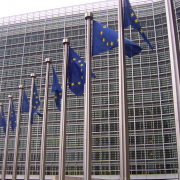EU demand for cereals and oilseeds remains driven mainly by feed use, although industrial uses will grow more rapidly. These are just a few of the projections for the arable crops market from the European Union agricultural outlook for 2019-30 report published on 10 December 2019 by the European Commission.
The cereal market is expected to grow through further differentiation. EU production is projected to reach 320 million tonnes in 2030 (compared to 312 million tonnes for 2019). Exports are expected to moderately increase due to enhanced competition at a global level, with rising production in the Black Sea region.
Concerning protein crops, a strong growth in EU production is expected, reaching 6.3 million tonnes in 2030 (compared to 3.9 million tonnes in 2019). This growth will be driven by a strong demand for plant protein products and locally produced protein sources, for both feed purposes and human consumption.
Agricultural area dedicated to oilseeds will slightly decrease, although a significant growth in soya beans area is projected. Rapeseed is expected to continue declining despite a sustained demand and their agronomic value in crop rotation systems. Overall, oilseed production should remain stable over the outlook period, expected at 32 million tonnes for 2030.
For the sugar sector, an annual decrease in human consumption of 0.8% is projected between 2019 and 2030. The EU sugar beet area is projected to stabilise around 1.6 million ha in 2030. As EU production, it is expected to reach 18.5 million tonnes in 2030 (compared to 17.5 million tonnes in 2019).
The EU agricultural outlook report for 2019-30 contains all relevant market data, accompanied by an explanation of assumptions, and a description of the macroeconomic environment. The projections and scenarios described in the report will be discussed at the annual EU agricultural conference, taking place in Brussels on 10-11 December 2019.
Source: Agropages


